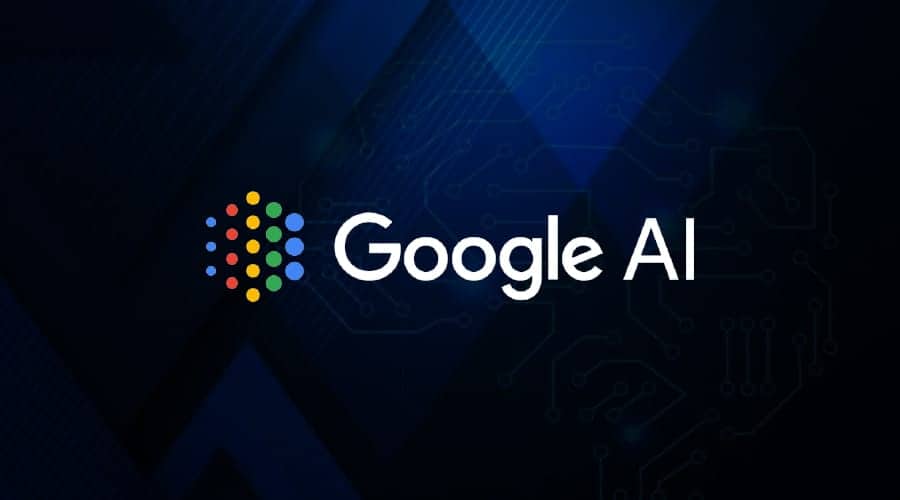
.
The cybersecurity landscape has witnessed a groundbreaking milestone as artificial intelligence takes center stage in vulnerability detection. Google’s innovative AI-powered security tool has achieved what many thought impossible just years ago. This development marks a significant shift in how we approach digital security threats.
The intersection of artificial intelligence and cybersecurity represents more than just technological advancement. It signals a new era where machines can actively hunt for security flaws with unprecedented precision and speed.
Big Sleep Makes Its Debut in Vulnerability Research
Google’s ambitious AI project, known as Big Sleep, has officially announced its first successful batch of security discoveries. Heather Adkins, who serves as Google’s vice president of security, revealed this milestone achievement during a Monday announcement that sent ripples through the cybersecurity community.
The AI system successfully identified and documented 20 distinct security vulnerabilities across various widely-used open source software platforms. This achievement represents months of development and testing by Google’s elite teams.
The Power Behind Big Sleep
Big Sleep emerges from a collaboration between two of Google’s most prestigious divisions. DeepMind, Google’s artificial intelligence research laboratory, joined forces with Project Zero, the company’s renowned team of security researchers and ethical hackers.
This partnership combines cutting-edge machine learning capabilities with decades of hands-on security expertise. The result is an AI system that understands both the technical aspects of code analysis and the real-world implications of security vulnerabilities.
Target Software and Discovery Details
The vulnerabilities discovered by Big Sleep span several critical open source projects that millions of users rely on daily. FFmpeg, the popular audio and video processing library, emerged as one of the primary targets where flaws were identified.
ImageMagick, the comprehensive image editing and manipulation suite, also contained vulnerabilities that Big Sleep successfully detected. These discoveries highlight the AI’s ability to analyze complex codebases across different programming languages and frameworks.
Responsible Disclosure Approach
Google maintains strict protocols regarding vulnerability disclosure to protect users and software maintainers. The company deliberately withholds specific details about the discovered flaws until developers can implement proper fixes.
This approach aligns with industry best practices for responsible vulnerability disclosure. By keeping technical details confidential, Google prevents malicious actors from exploiting these security gaps before patches become available.
Human-AI Collaboration in Security Research
Despite Big Sleep’s autonomous discovery capabilities, human expertise remains crucial in the vulnerability assessment process. Kimberly Samra, Google’s official spokesperson, clarified the AI’s operational methodology to TechCrunch.
Each vulnerability undergoes initial discovery and reproduction by the AI agent without human intervention. However, experienced security researchers review every finding before public reporting to ensure accuracy and actionable recommendations.
This hybrid approach maximizes both efficiency and reliability. The AI handles the time-intensive scanning and pattern recognition tasks, while human experts provide context and verification.
Industry Recognition and Competitive Landscape
Royal Hansen, Google’s vice president of engineering, characterized these findings as evidence of a “new frontier in automated vulnerability discovery.” This assessment reflects growing industry recognition of AI’s potential in cybersecurity applications.
Big Sleep joins an expanding ecosystem of AI-powered security tools. RunSybil and XBOW represent notable competitors in this emerging market, each bringing unique approaches to automated vulnerability detection.
XBOW’s Notable Achievements
XBOW has gained significant attention within the security community after achieving top rankings on HackerOne’s competitive leaderboards. This platform serves as a premier destination for bug bounty programs and security research collaboration.
The success of multiple AI-driven security tools demonstrates the viability and growing sophistication of automated vulnerability discovery systems.
Expert Validation and Industry Credibility
Vlad Ionescu, who serves as co-founder and chief technology officer at RunSybil, provided professional assessment of Google’s Big Sleep project. His evaluation carries significant weight given his company’s direct involvement in developing similar AI-powered security tools.
Ionescu praised Big Sleep as a “legitimate” project, citing several factors that contribute to its credibility. The system benefits from thoughtful architectural design, experienced leadership, and substantial computational resources from Google’s infrastructure.
Project Zero’s established reputation in vulnerability research adds further legitimacy to the AI system’s capabilities. This team has consistently demonstrated expertise in identifying and analyzing complex security flaws across diverse software ecosystems.
Challenges and Limitations of AI Security Tools
The proliferation of AI-powered security tools brings both opportunities and significant challenges. Software maintainers have reported increasing numbers of false positive reports that require time and resources to investigate.
These AI-generated hallucinations represent a form of “security slop” that can burden development teams with invalid vulnerability claims. The phenomenon highlights the importance of human oversight in AI-driven security research.
Balancing Automation and Accuracy
The industry faces ongoing challenges in optimizing AI tools for maximum accuracy while minimizing false positives. This balance requires continuous refinement of machine learning models and validation processes.
Successful implementation depends on maintaining high-quality training data and sophisticated filtering mechanisms to distinguish genuine vulnerabilities from algorithmic errors.
Future Implications for Cybersecurity
Big Sleep’s success signals broader transformations approaching the cybersecurity industry. AI-powered tools will likely become standard components of security research and vulnerability management programs.
Organizations must prepare for both the benefits and challenges of increased AI involvement in security operations. This preparation includes developing new workflows, training security teams, and establishing quality assurance processes.
Scaling Security Research Capabilities
AI tools offer the potential to dramatically scale security research efforts beyond human limitations. These systems can analyze vast amounts of code continuously, identifying patterns and vulnerabilities that might escape human detection.
This scalability becomes increasingly important as software complexity continues growing and the volume of code requiring security analysis expands exponentially.
Google’s Big Sleep represents a pivotal advancement in automated cybersecurity research, successfully demonstrating AI’s capability to discover real-world security vulnerabilities. The system’s initial batch of 20 vulnerability discoveries across popular open source software establishes a new benchmark for AI-powered security tools.
The collaborative approach between artificial intelligence and human expertise offers a promising model for future security research initiatives. While challenges such as false positives and AI hallucinations require ongoing attention, the potential benefits of scaled vulnerability discovery cannot be ignored.
As the cybersecurity landscape continues evolving, AI-powered tools like Big Sleep will play increasingly crucial roles in protecting digital infrastructure. Organizations and security professionals must embrace these technological advances while maintaining the human oversight necessary to ensure accuracy and effectiveness.
The success of Big Sleep marks just the beginning of AI’s transformation of cybersecurity research, promising more sophisticated and capable security tools in the years ahead.
READ ALSO: Kenya Bets Big on Blockchain: Plans Bitcoin Reserves and Crypto Regulation









[…] READ ALSO: Google’s Big Sleep Discovers 20 Critical Software Vulnerabilities […]